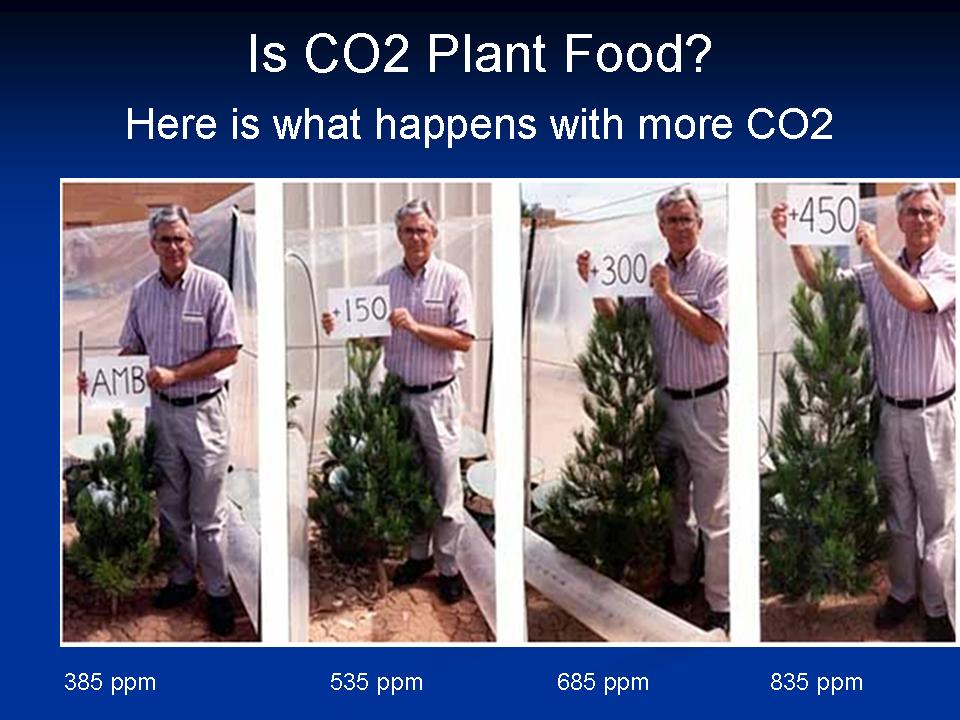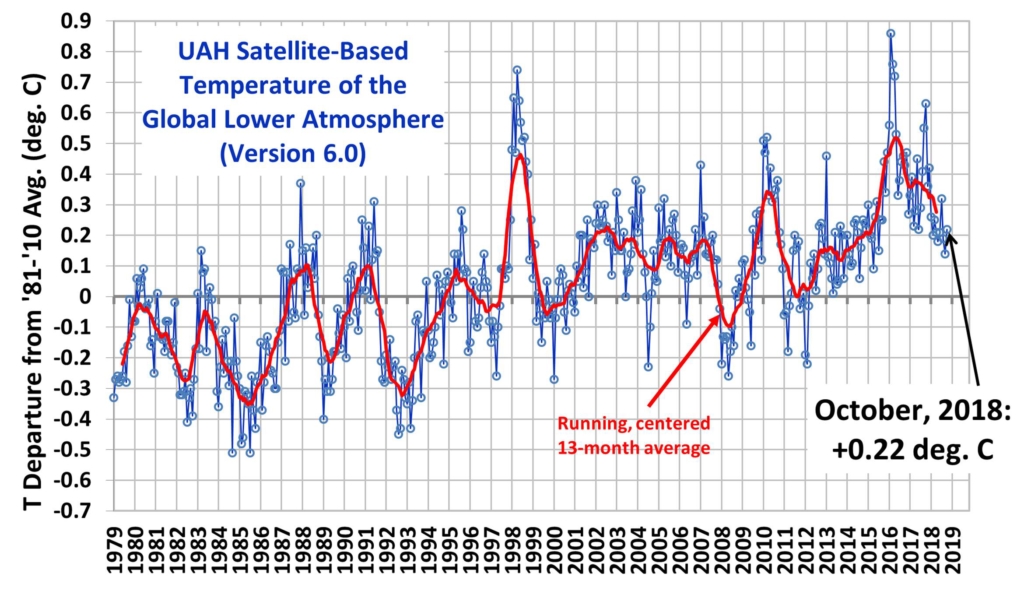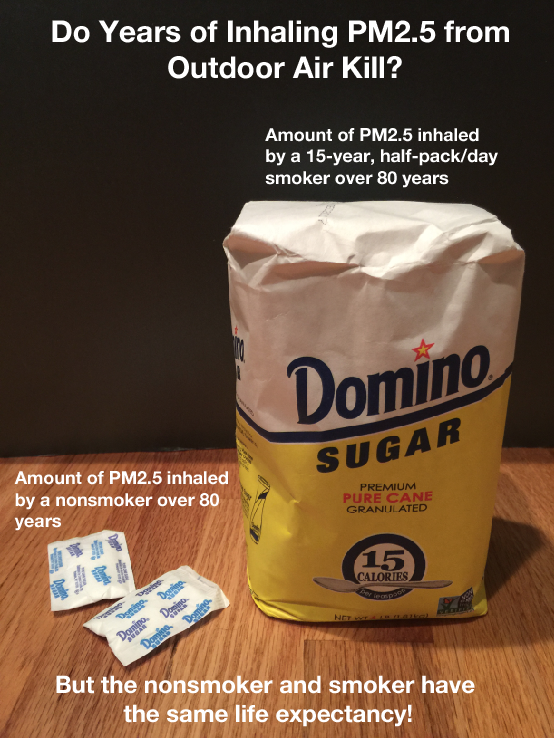Coal burned in a modern power plant is good for both the environment and public health.
Coal and the Environment
When coal is burned in a power plant, colorless and odorless carbon dioxide (CO2) is emitted. CO2 is plant food that is essential for life on Earth. Coal-fired power plants and other sources that burn coal/oil/gas/biomass are increasing the level of CO2 in the atmosphere.
Plants that grow in environments with more CO2, grow more.

NASA satellites show that the increase in CO2 is “greening” the Earth — i.e., creating more plant life, which supports more animal, aquatic and microbiological life. More food for more life is a good thing. [Source: Web | PDF]
Related news: Warming since 1981 helping corn yields
Coal and Climate
In December 2009, the US Environmental Protection Agency (EPA) issued its controversial “endangerment finding” for carbon dioxide (CO2) under the Clean Air Act. As the first shot in the Obama administrations’s war-on-coal, the endangerment finding represents the Obama EPA’s determination that CO2 emissions threaten public welfare. Putting aside the controversy over its merits for the moment, at the very least, the endangerment finding made coal-fired power plants politically incorrect and, therefore, an easier target for coal opponents.
More concerned with political correctness than the adverse impacts on electricity prices, people, manufacturing and the national economy, electric utilities seized upon CO2 as an excuse to completely eliminate all of their coal plants over time — notwithstanding that CO2 is not actually regulated in most states or at the federal level, even under the Obama EPA’s Clean Power Plan.
Many believed that the election of President Trump would forestall continued closure of coal plants given his embrace of a robust future for coal and all fossil fuels during the campaign. And since the election, President Trump has made good on his pro-coal promises with the promotion of “beautiful clean coal” in the America First Energy Plan and in his ordered withdrawal by EPA of the Clean Power Plan, underway right now.
But notwithstanding the President’s support and actions, coal plant closures continue and, indeed, have accelerated. The deindustrialization of the American economy is being advanced by managements who have put short term profits and political correctness ahead of the long-term financial health of their utilities and well-being of their ratepayers and communities. Utility managements ignore the well-being of everyday consumers who rely on their product — electricity — one of life’s necessities, fundamental to all of our daily needs.
The EPA endangerment findings are at the heart of the coal industry’s past and current problems as the utilities make hidden use of putative carbon-cost pricing (either through a carbon or CO2 tax or the so-called “social cost of carbon”) in regulatory filings and public statements. By doing this they make facile and intellectually dishonest claims that coal is no longer the cheapest source of electricity.
The Obama administration’s CO2 finding is bankrupt in its claim that more CO2 in the atmosphere is a current and long-term threat to public health and welfare. These findings on their face would eventually preclude the use of any fossil fuels and represent a deeply flawed agenda contradicted by decades of observations, human social development through the robust use of fossil fuels and commonsense. The findings are directly contradicted by basic human development through fossil fuels and coal electricity observations since 1965, when government concerns over CO2 first officially surfaced.
Despite the 1965 report, the Carter administration urged the build-out of the coal plant fleet in response to the 1970s energy crisis. But on its way out the door in January 1981, Cater administration tried to undermine its own pro-coal initiatives by issuing a speculative pronouncement on the alleged dangers from human induced global warming caused by using fossil fuels.
In a document with startlingly familiar terms, tone and refrains to those of today, the brand new White House Council on Environmental Quality (CEQ) published a document styled the “Global Energy Futures and the Carbon Dioxide Problem.” Gus Speth, a noted environmentalist, was the first CEQ chairman. It is no surprise what the conclusions were.
The document speculated in similar terms as today that manmade “loading” of the atmosphere with CO2 could lead to a 3 degree C increase in global temperatures by the year 2025! It also speculated, without any explanation why, that such an increase would be detectable within 20 years.
CEQ strongly claimed in their document that negative planetary and people impact from such warming would require the abandonment of coal and fossil fuel use with the same vision of CO2 apocalypse embraced by Obama EPA in the 2009 CO2 endangerment findings.
But the CEQ fear of a CO2 apocalypse was as wrong then as the Obama EPA CO2 endangerment finding is now. Yes, fossil fuel use and CO2 emissions are increasing — the one thing the CEQ and Obama EPA got right — but otherwise there are only positives from coal and CO2 emissions in human development metrics, and under the human health and welfare standards of the Clean Air Act.
In the almost-four decades since the CEQ report, our massive increase in fossil fuel use has raised atmospheric CO2 content from 337 PPM to 406 PPM today. During this period:
- Global population increased from 4.5 billion to 7.6 billion;
- Global life expectancy increased from 60 years to 70 years; and
- Food production continues to set annual records year-over-year.
- Coal production/consumption for electricity use and urbanization increased from 4.2 billion tons/year to 7.6 billion tons/year in 2017.
Yet the planet has not warmed anywhere near that predicted in 1978. According to satellite data collected since 1979, the Earth has been warming at a miniscule average rate of 0.13 degree C per decade, well within natural variability.

The Earth itself has been greening with desert turning to grasslands, grasslands to forest and biomass cover for increased animal life. And of course, social development and increase in standard of living through coal electricity is as needed today as it was when coal plant construction was prioritized during the 1975-1985 period.
Coal and Air
The Obama EPA proposed on June 2, 2014 to reduce carbon dioxide (CO2) emissions from coal-fired power plants by reducing the amount of coal burned. EPA claimed this rule will prevent up to 6,600 premature deaths annually. These deaths would not be prevented by reducing CO2 emissions but instead by accompanying reductions in emissions of “fine particulate matter” (PM2.5) — dust or soot particles much smaller in diameter than the width of a human hair. As the rule would reduce CO2 emissions by reducing the amount of coal burned, it would similarly reduce PM2.5 emissions. The Obama EPA viewed this reduction in PM2.5 emissions as a health benefit.
The Obama EPA’s position was that:
- ANY inhalation of PM2.5 — even one molecule — can cause death;
- Death from PM2.5 may occur within hours of inhalation (i.e., on a short-term basis or, literally, “sudden death”) and that;
- Death from PM2.5 may occur after decades of inhalation (i.e., on a long-term basis).
EPA claims that manmade PM2.5 causes as many as 500,000 deaths annually — i.e., about one in five deaths in the U.S. [1]
In support its claim that PM2.5 kills, EPA points to “thousands” of epidemiologic (statistical studies of human populations), toxicologic (experiments on animals) and clinical (experiments on humans) studies. [2] EPA further claims that the agency’s conclusions have been endorsed by its Clean Air Act Scientific Advisory Committee (CASAC), a board of supposedly “independent” science advisors.[3]
What is PM2.5? PM2.5 (see image below) is very small/fine soot and dust in the air. It has natural sources (e.g., forest fires, volcanoes, pollen, molds) and manmade sources (e.g., smokestack/tailpipe emissions, fires (fireplaces, campfires, grills), smoking). Depending on source, PM2.5 will vary in composition (i.e., PM2.5 in smoke is different than pollen PM2.5).

EPA’s three bodies of research. EPA claims the PM2.5-death hypothesis is supported by existing epidemiology, toxicology and clinical studies. This is false.
- Epidemiology. EPA admitted in federal court that its epidemiologic studies on PM2.5, because of their exclusively statistical nature, prove nothing by themselves. In 2012 litigation in which EPA attempted to justify its experiments on humans with PM2.5, EPA admitted doing the experiments because: “epidemiologic studies do not generally provide evidence of direct causation.” The purpose of the human experiments, according to EPA, was to develop a medical or biological explanation (i.e., the direct causation) that would support the merely statistical (and, by the way, controversial) results of the PM2.5 epidemiology studies. [4]
- Toxicology. No laboratory animal has ever died from PM2.5 in an experimental setting — even though animals have been exposed to levels of PM2.5 as much as 100+ times greater than human exposures to PM2.5 in outdoor air. [5]
- Clinical studies. EPA has tested a variety of air pollutants — including very high exposures to PM2.5 — on over 6,000 human volunteers. Many of these volunteers were elderly or already health-compromised — the very groups EPA claims are most susceptible to dying from PM2.5 exposures. EPA has admitted that there have been no deaths or any dangerous adverse events clearly caused by these PM2.5 exposures. PM2.5 exposures in these experiments have been as high as 21 times greater than allowable by EPA’s own air quality rules.
So EPA’s claim about PM2.5 causing death is not supported by the results from these research disciplines, individually or collectively.
Real-world evidence that PM2.5 does not cause sudden or long-term death. Everyone is constantly and unavoidably exposed to PM2.5 from both natural and manmade sources. Natural sources include dust, pollen, mold, pet dander, forest fires, sea spray and volcanoes. Manmade sources primarily are smoking, fossil fuel burning, industrial processes, wood stoves, fireplaces and indoor cooking. Indoor exposures to PM2.5 can easily exceed outdoor exposures — by as much as a factor of 100. [7]
- Although EPA claims that almost 25% of annual U.S. deaths are caused by PM2.5, no death has ever been medically attributed to PM2.5.
- Despite much research, there is no generally accepted medical or biological explanation for how PM2.5 could possibly cause death.
- Much higher exposures to PM2.5 than exist even in the “worst” outdoor air are not associated with sudden death. The level of PM2.5 in average U.S. outdoor air — air that EPA claims can cause sudden death — is about 10 millionths of a gram (microgram) per cubic meter. In one day, a person breathing such air would inhale about 240 micrograms of PM2.5. In contrast, a cigarette smoker inhales approximately 10,000 to 40,000 micrograms of PM2.5 per cigarette. [8] A marijuana smoker inhales 3.5-4.5 times more PM2.5 — i.e., 35,000 to 180,000 micrograms of PM2.5. [9] Typical water pipe or “hookah” smokers inhale the equivalent PM2.5 of 100 cigarettes per session. [10] There is no example in published medical literature of these various types of short-term smoking causing sudden death despite the very high exposures to PM2.5. [11] Sudden death is also not associated with other high PM2.5 exposures and environments like mines, [12] indoor wood burning, smoking areas [13] or extremely poor quality urban air, for example, in Chinese cities. [14]
- PM2.5 also doesn’t kill after longer term exposures (i.e., years and decades). The smoking epidemiology proves this. A limited smoker, for example, can inhale more than 4 pounds of PM2.5 from smoking over the course of his lifetime and expect to live as long as a nonsmoker who has only inhaled about two sugar packets worth of PM2.5 from outdoor air. [15]

- Finally, if EPA really believed that PM2.5 was as deadly as it claims, then the agency would be legally and ethically compelled to stop conducting experiments in which human subjects, including the elderly and health compromised, are made to inhale PM2.5 at rates up to 21 times higher than EPA air pollution standards allow. The agency, however, has refused to cease conducting these experiments. [16]
Transparent science conflicts with EPA’s secret science. The EPA’s claim that PM2.5 causes long-term death is grounded in two long-term epidemiologic studies, commonly referred to as the (1) Harvard Six-Cities Study [17] and the (2) “Pope” study [18]. Both studies are controversial for many methodological reasons. But the methodological controversies cannot be resolved because EPA refuses to release and/or refuses to compel release of the mortality data used in the studies to independent researchers for purposes of re-analysis and replication. For results to be considered to be scientifically credible, they must be capable of being independently replicated. In contrast, a large analysis of the recent daily air quality and daily death data from California for 2007-2010 reports no association between PM2.5 and death. [19] The data from the California study are available upon request from the researchers.
But haven’t EPA’s PM2.5 claims been validated by its independent science advisers? No. The group of independent science advisers formed to review EPA air quality science is the Clean Air Scientific Advisory Committee (CASAC). In 1996, when the CASAC was actually mostly comprised of independent advisers, CASAC concluded that EPA had not shown that PM2.5 caused death. While subsequent CASAC panels have ruled in EPA’s favor, these panels are almost exclusively comprised of researchers who receive hundreds of millions of dollars worth of research grants from EPA — and wind up passing judgment on their own work. These more recent CASAC panels can hardly be considered as independent of EPA. The nature of the PM2.5 science has not changed since 1996 — but composition of EPA’s “independent” panels has. [20]
What about claims that PM2.5 from indoor cooking kill people? The World Health Organization (WHO) claims that smoke from indoor cooking kills more than 4 million people die every year. [21] The studies used to support this claim depend entirely on the EPA’s claim that PM2.5 kills people. So the WHO’s claim is not supportable. While many individual researchers (not EPA-related) have attempted to examine whether indoor cooking increases deaths rates, they have so far not been able to link PM2.5 with death. [22]
Conclusion: PM2.5 does not kill anyone. The EPA’s claims of PM2.5 lethality rank among the most nonsensical, fraudulent and readily disprovable scientific claims ever.
References
- A summary of what EPA claims about the lethality of PM2.5, including links to original documents, is at: http://epahumantesting.com/the-most-toxic-substance-on-earth/. The 500,000 deaths estimate is on p. G-7 of the EPA’s June 2010 “Quantitative Health Risk Assessment for Particulate Matter“.
- EPA’s June 2014 “Regulatory Impact Analysis for the Proposed Carbon Pollution Guidelines for Existing Power Plants and Emission Standards for Modified and Reconstructed Power Plants“, page 4-19.
- See #2, above.
- EPA’s September 2012 “Memorandum In Opposition To Plaintiff’s Motion For Temporary Restraining Order“, page 6.
- In 78 Federal Register 3086, 3115 (January 15, 2013), the EPA admitted the only way to kill animals with particulate matter is to first poison them with something else.
- See #2, above.
- World Health Organization, Household air pollution and health, Fact sheet N°292, Updated February 2016.
- See Ghio AJ et al., Particulate Matter in Cigarette Smoke Alters Iron Homeostasis to Produce a Biological Effect, Am J Respir Crit Care Med. 2008 Dec 1;178(11):1130-8. doi: 10.1164/rccm.200802-334OC. Epub 2008 Aug 21.
- See e.g., The Effects of Marijuana Smoke, DrugScience.org.
- Hookah smoking poses health risks, NIH studies show, NIH Fogarty International Center, March / April 2014 | Volume 13, Issue 2.
- Milloy S, What’s EPA Smoking?, Washington Times, November 30, 2012.
- Coal Mine Dust Exposures and Associated Health Outcomes
A Review of Information Published Since 1995, NIOSH, April 2011. - See e.g., #10.
- Milloy S, China’s bad air puts the lie to EPA scare tactics, Washington Times, January 22, 2013.
- How does this photo debunk EPA’s most important ‘scientific’ claim?, JunkScience.com.
- See e.g., Milloy S, The EPA’s Secret Whitewash of Illegal Experiments, Washington Times, July 24, 2016.
- Dockery D et al., An Association between Air Pollution and Mortality in Six U.S. Cities, N Engl J Med , 329:1753-1759, December 9, 1993.
- Pope CA III et al., Particulate air pollution as a predictor of mortality in a prospective study of U.S. adults, Am J Respir Crit Care Med. 1995 Mar;151(3 Pt 1):669-74.
- Lopiano KK et al., Air quality and acute deaths in California, 2000-2012, arXiv.org, arXiv:1502.03062.
- Milloy S, Corrupting and Independent Science Panel, Washington Times, August 7, 2016.
- See #7.
- See e.g., Does anyone die from indoor air pollution?, JunkScience.com.
